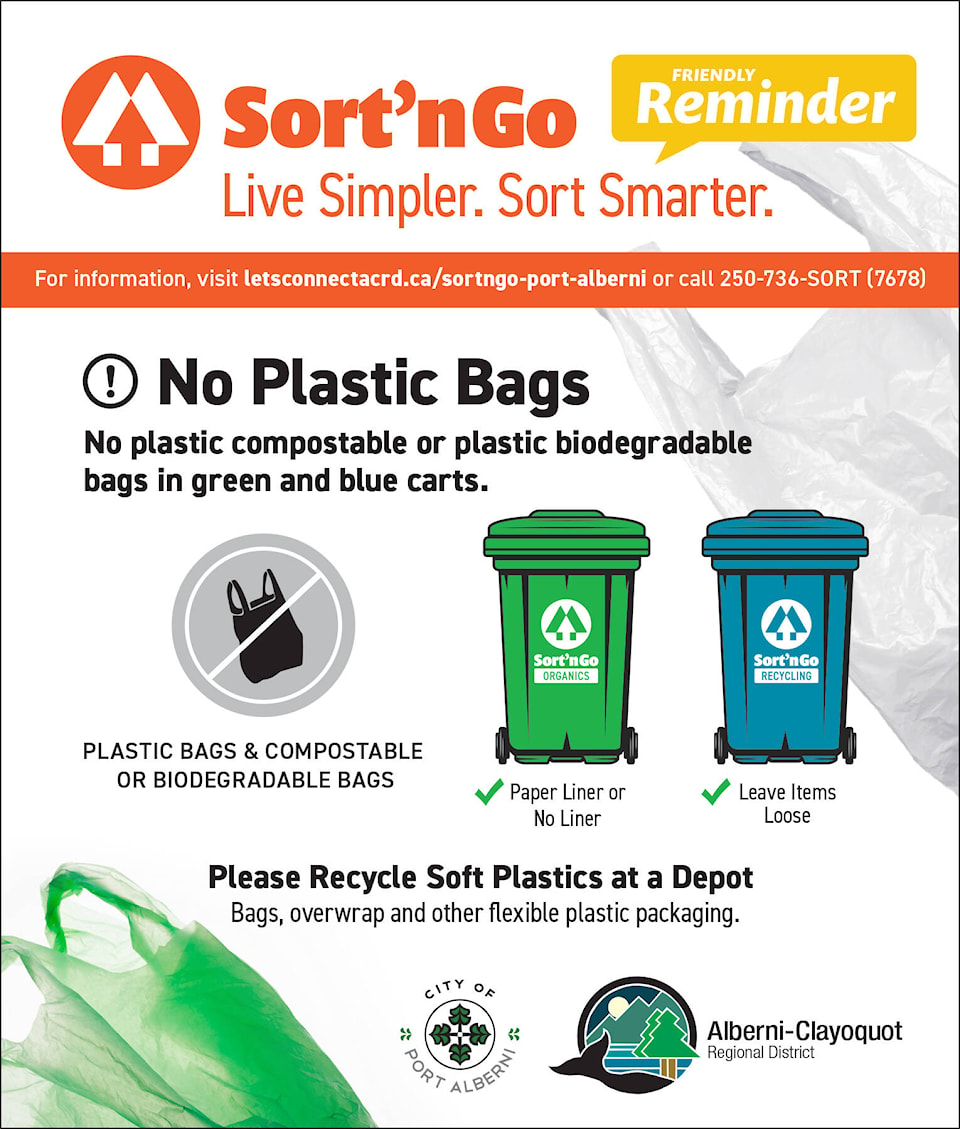In the late fall of 2021, a curbside waste composition study was conducted over two weeks. The waste audit results show that overall, residents are doing a great job of utilizing the three-stream curbside collection service introduced this past September by the City of Port Alberni and the Alberni-Clayoquot Regional District.
What is a curbside waste composition study?
Waste composition studies provide important details on community waste reduction and diversion programs and are used to determine waste composition and to measure and track effectiveness over time. Waste samples are sorted into material categories (seven major categories, with an additional 59 subcategories), weighed, and given a percentage of the total weight of garbage sampled. This information helps to create a snapshot of how people are using the appropriate carts, contamination and diversion rates, common mis-sorted items as well as providing data on the various streams collected by weight.
For the local study, 100 single-family residential households were selected as sample households, representing various collection areas and housing types across the City of Port Alberni. Collected material was brought back to a centralized location where each waste stream was sorted and analyzed.
Diversion and capture rates
The waste composition study shows the diversion and capture rates. On average, a single-family household generated 8.14 kilograms per week (kg/hh/wk) of curbside waste. Of that, 1.39 kg/hh/wk was diverted from the landfill through the curbside recycling program, 3.52 kg/hh/wk was diverted through the new organics program, for an overall curbside diversion rate of 60.37 per cent.
This percentage exceeds the target goal that the ACRD had originally set!
Where is the potential for higher diversion rates?
Although the diversion rate has dramatically increased with the three-stream curbside collection service, there is still room for improvement. The average quantity of material set out in the garbage stream by a single-family household was 3.11 kg/hh/wk (bi-weekly set-out normalized to a weekly equivalent). When you look at the garbage stream composition, it’s evident that more can be redirected to the recycling and organics carts.
What are we still finding in the garbage cart?
- Recyclable materials (currently accepted in curbside recycling program) made up 10.67 per cent of the garbage stream by weight at 0.33 kg/hh/wk.
- Organic materials represented 28.01 per cent, or 0.87 kg/hh/wk.
- Recycling depot material accounted for an additional 10.64 per cent.
Contamination rates for organics stream
Households that were part of the audit that are utilizing their green carts are doing so with little contamination. Acceptable organic material accounted for a total of 99.59 per cent. The remaining 0.41 per cent consisted of contamination.
The primary item contaminating our organics stream
Plastic bags are the most common found item that does not belong in the organics cart. One of the key messages of the education campaign that the ACRD rolled out with the launch of the three-stream collection service was that no plastic bags (compostable, biodegradable, or conventional) would be accepted in the curbside organics program.
Where can my plastic bags go?
Conventional plastic bags are accepted in the overwrap plastic stream at the 3rd Ave Recycling Depot or the AV Landfill Recycling station.
Friendly Reminder: Compostable plastic bags belong in your garbage cart. Compostable plastics end up contaminating the overwrap plastic stream as they are not made of the same materials as recyclable plastic, so they do not withstand recycling processes.
Stay in the Know with Sort’nGo!
Visit www.letsconnectacrd.ca/organics for more information about the Organics Collection Service and to ask questions. Questions about sorting and what day your collection is? Download the free Sort’nGo app from your mobile app store for Android and Apple phones. You can also check out facebook.com/ACRD.recycles for weekly tips and updates for the Valley.
And if you’re a community group or a local business, contact the ACRD to arrange for an educational presentation for how to best utilize this service.
